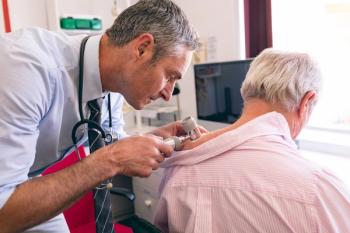
Using Video Education to Boost Patient Engagement in Echocardiography: Merrill Stewart, MD

Merrill H. Stewart, MD, Ochsner Health, explains how his practice takes advantage of downtime during cardiologist appointments to educate patients.
Captions were auto-generated.
Echocardiograms are important for measuring
In an interview with The American Journal of Managed Care® (AJMC®), Stewart described his practice’s experience developing educational video content for patients undergoing stress echocardiography. Although printed pamphlets and flyers have long been standard in cardiology clinics, Stewart found that video engages patients more effectively, especially during the downtime they often experience while waiting for appointments or follow-up.
“The average patient retains about 10% of what a doctor tells them in the doctor's office, and that's something that's not going to change,” Stewart told AJMC. “When people are sitting in the doctors' offices, they're sitting waiting for the doctor to show up, or the doctor's finished and they're waiting for the nurse to do their orders, there’s a lot of downtime, and we've realized we could utilize that downtime for education.”
With health care portals, patients often get their test results back before their doctor can explain them; if it takes a few days for the doctor to call or have a follow-up appointment, this can cause anxiety in patients. The videos, Stewart says, help explain what the test is, what it entails, and what the results mean so that patients aren’t “waiting on pins and needles for the doctor to call them.”
These videos are integrated into several touchpoints during the patient journey: in the exam room, through appointment reminders, and alongside test results in the patient portal. Stewart’s team also conducted surveys to measure changes in knowledge, engagement, and follow-up adherence, all of which improved with video education. One project focused on educating patients about their metabolic equivalents—a measure of how much physical activity they could handle during a stress test—and found that patients who understood this metric not only felt more empowered, but also reported a desire to improve their scores.
“If they know what's going on and they're more engaged with their health care, they're more likely to come back for a follow-up, they're more likely to take their medications, they're more likely to have all sorts of positive interactions with the healthcare system when they feel more engaged and they know what's going on,” Stewart said. “There's not a lot of downsides to it.”
Newsletter
Stay ahead of policy, cost, and value—subscribe to AJMC for expert insights at the intersection of clinical care and health economics.













































